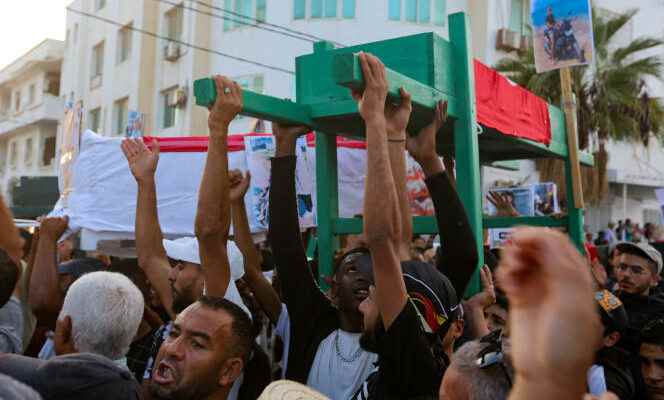A coastline of white sand lapped by an opaline sea where fishing boats anchor here and there. Palm trees spread their puddles of shade, shells are caught in the nets of washed up seaweed. It was from this strip of beaches in Zarzis (Tunisia) that they left on September 21. Seventeen young people, half of them minors. As evening fell, they jumped into a fiberglass hull fitted with an engine and raced northeast towards the Italian island of Lampedusa. None arrived at their destination, none returned to Zarzis. All of them disappeared at sea.
A new drama of migration off these coasts of south-eastern Tunisia? New victims among the 2,000 drowned each year during attempts to cross the Mediterranean, all routes combined?
In Zarzis, a fishing town in the south of the island of Djerba, not far from the border with Libya, three months after the sinking, the emotion remains incandescent. And tragedy is mixed with anger in a deleterious cocktail.
They erected canvas tents at the entrance to the sub-prefecture, a whitish building with blue shutters. Fathers, mothers, aunts, brothers or cousins take turns in a sit-in in front of this symbol of the State to maintain the flame, that of the memory of their children engulfed in the waves, victims of a shipwreck in mysterious circumstances about which they ask ” the truth ” and ” Justice “.
Families keep the pressure on
After the general strike of October 18, which paralyzed the town, and the clashes of November 18 with the police using tear gas at the entrance to Djerba where the Summit of the Francophonie was held, the great mobilizations mark a pause.
The families nevertheless maintain the pressure with their tents and their posters. Waiting for a new eruption? “If we do not get satisfaction, we will close the city”, warns the leader of the fishermen of Zarzis, Chamseddine Bourassine, cap screwed on the skull and hands stuffed in the pockets of his sweatshirt. Mr. Bourassine is an iconic figure of Zarzis, a tireless savior of shipwrecked people on the high seas.
Giant photos of the drowned are hung on the railings of the building. Their names were Ahmed Rayan Al-Aoudi, Omar Abdelkrim, Loaï Abdelkrim, Mahmoud Aziz Abdelkrim, Zaher Abdelkrim, Zaher Al-Ajimi etc. We see them on the pictures, beardless and smiling faces, frolicking in the water – this water that will carry them away later – or riding a motorbike in a brave pose. They were between 14 and 15 years old, barely tearing themselves away from childhood.
You have 63.47% of this article left to read. The following is for subscribers only.
